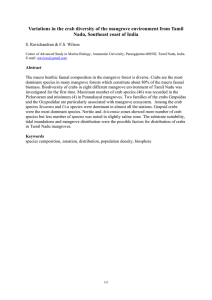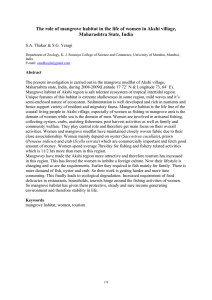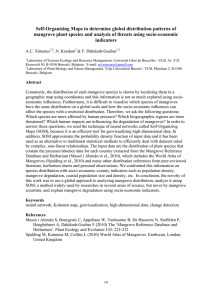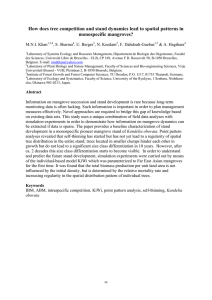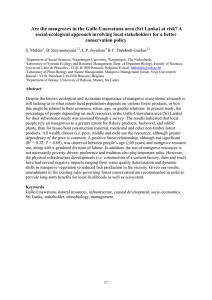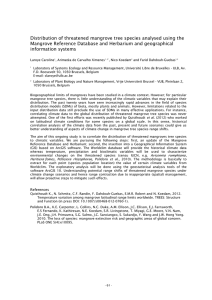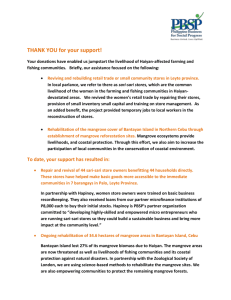Socio-economics of mangrove-dependent people on the southeast coast of India N. Rajendran
advertisement
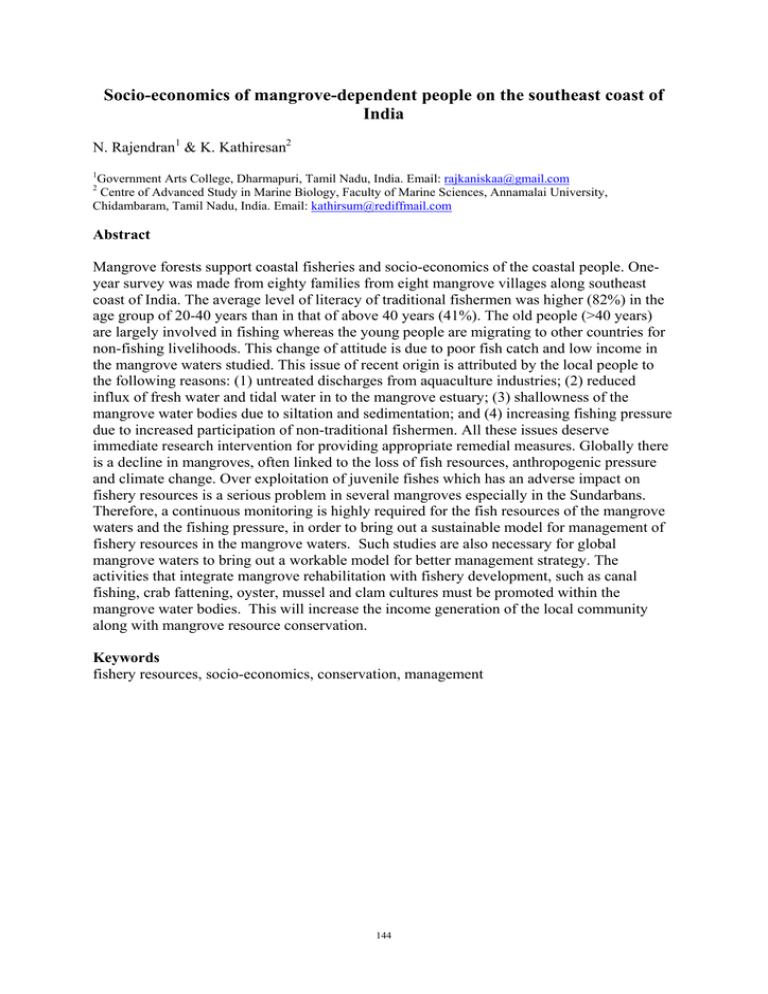
Socio-economics of mangrove-dependent people on the southeast coast of India N. Rajendran1 & K. Kathiresan2 1 Government Arts College, Dharmapuri, Tamil Nadu, India. Email: rajkaniskaa@gmail.com Centre of Advanced Study in Marine Biology, Faculty of Marine Sciences, Annamalai University, Chidambaram, Tamil Nadu, India. Email: kathirsum@rediffmail.com 2 Abstract Mangrove forests support coastal fisheries and socio-economics of the coastal people. Oneyear survey was made from eighty families from eight mangrove villages along southeast coast of India. The average level of literacy of traditional fishermen was higher (82%) in the age group of 20-40 years than in that of above 40 years (41%). The old people (>40 years) are largely involved in fishing whereas the young people are migrating to other countries for non-fishing livelihoods. This change of attitude is due to poor fish catch and low income in the mangrove waters studied. This issue of recent origin is attributed by the local people to the following reasons: (1) untreated discharges from aquaculture industries; (2) reduced influx of fresh water and tidal water in to the mangrove estuary; (3) shallowness of the mangrove water bodies due to siltation and sedimentation; and (4) increasing fishing pressure due to increased participation of non-traditional fishermen. All these issues deserve immediate research intervention for providing appropriate remedial measures. Globally there is a decline in mangroves, often linked to the loss of fish resources, anthropogenic pressure and climate change. Over exploitation of juvenile fishes which has an adverse impact on fishery resources is a serious problem in several mangroves especially in the Sundarbans. Therefore, a continuous monitoring is highly required for the fish resources of the mangrove waters and the fishing pressure, in order to bring out a sustainable model for management of fishery resources in the mangrove waters. Such studies are also necessary for global mangrove waters to bring out a workable model for better management strategy. The activities that integrate mangrove rehabilitation with fishery development, such as canal fishing, crab fattening, oyster, mussel and clam cultures must be promoted within the mangrove water bodies. This will increase the income generation of the local community along with mangrove resource conservation. Keywords fishery resources, socio-economics, conservation, management 144
